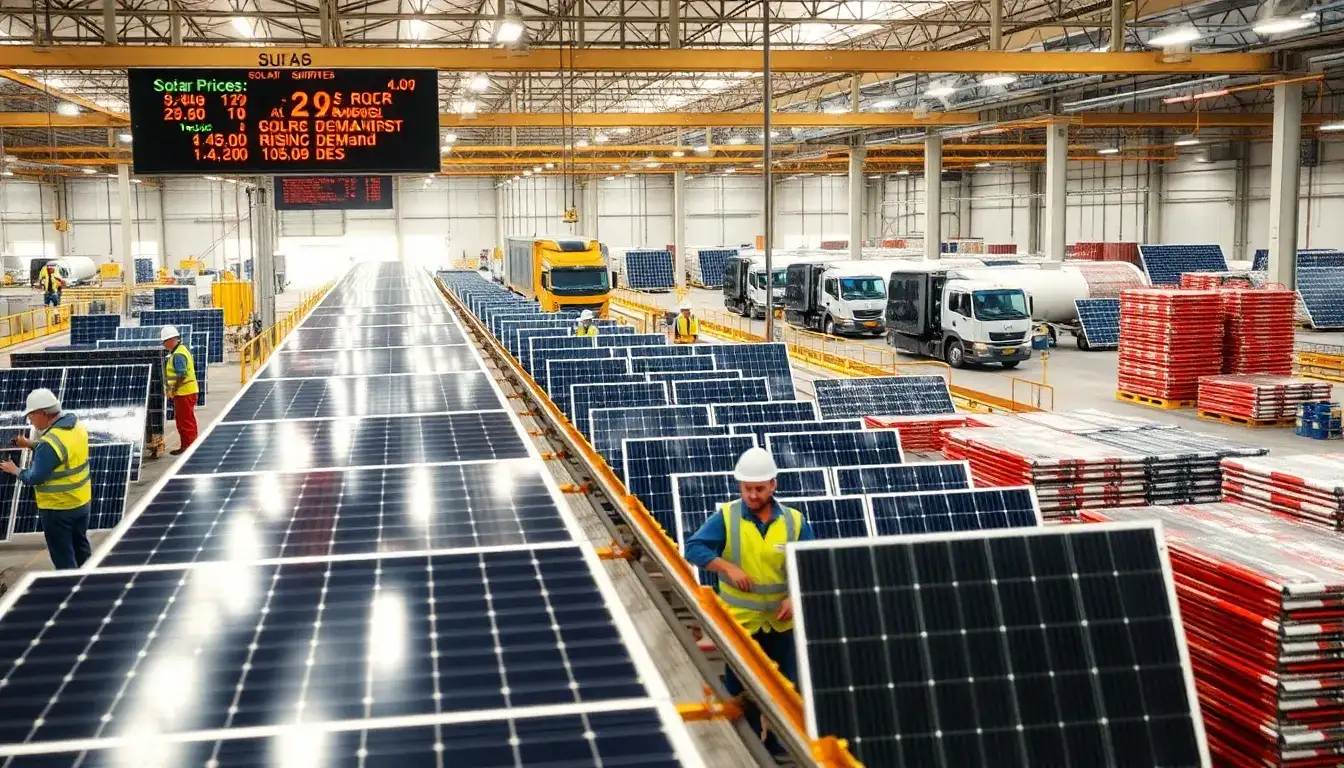
Surge in Photovoltaic Prices Amidst Installation Rush
Recently, the photovoltaic industry has experienced a remarkable surge in activity. A factory manager in Chuzhou has been actively seeking large quantities of 182mm solar cells through social media, signaling a growing demand. The market is facing a shortage of these cells, leading to tight supply conditions for solar modules.
As the deadlines for two major photovoltaic policies approach—April 30 and May 31—there has been a rush to secure orders. Downstream distributors are reporting limited stock, particularly for larger modules, which are mostly sold out and require advance booking. Due to the risks associated with futures prices and potential factory defaults, the immediate focus is on securing available stock. Industry insiders suggest that prices for modules may exceed 0.9 yuan/W.
In January, two significant policies were introduced: the Management Measures for Distributed Photovoltaic Power Generation Development and the Notice on Deepening the Market-Oriented Reform of New Energy Grid Prices. These regulations stipulate that projects completed before April 30 and under 20MW can still connect to the grid and sell power at full price. In contrast, projects connected after this date must rely on self-consumption or partial grid sales.
Furthermore, starting from May 31, 2025, all new distributed photovoltaic projects must engage in power trading through the electricity spot market. This creates a significant deadline for projects to enter the market, directly affecting the profitability of photovoltaic stations, which relies on income from electricity generation, policy subsidies, carbon trading, and asset appreciation.
According to a recent report from SMM Photovoltaic Insights, module prices have increased slightly; the mainstream transaction price for N-type 182mm modules is now between 0.704 and 0.722 yuan/W, while N-type 210mm modules range from 0.719 to 0.737 yuan/W. Prices for Topcon distributed modules are between 0.764 and 0.780 yuan/W. Overall, production in March has risen by 35% compared to the previous month, with increased order deliveries.
Many manufacturers are still focused on reducing stock levels and are actively accepting new orders. The consulting firm InfoLink reports a noticeable increase in orders during the March to April window, particularly in the distributed market. Some reports indicate that module prices have reached as high as 0.8 yuan/W, with specific regions reporting increases of 0.05 to 0.06 yuan/W for distributed photovoltaics.
However, questions remain about whether prices will continue to rise. Representatives from Trina Solar and LONGi Green Energy have not provided definitive answers. A distributor noted that current prices are likely to increase, projecting a peak around 0.95 yuan/W, depending on market conditions.
Ensuring Delivery Amidst Price Increases
Distributors emphasize that securing timely deliveries is more critical than the price itself. One distributor mentioned that many models cannot be delivered on time and that there is currently limited stock available. This situation is forcing downstream customers to place advance orders with manufacturers, raising concerns about whether factories can meet their commitments.
Amid these challenges, it has been reported that some lower-quality solar cells from smaller manufacturers have entered the market, prompting warnings from leading companies like Aiko Solar and Trina Solar about potential safety risks associated with unauthorized products.
Additionally, the entire supply chain is experiencing price increases, affecting materials such as silicon, wafers, encapsulants, and glass. Major companies have started reducing production, which has contributed to the current price surge. Tongwei Co. and Daqo New Energy have announced production cuts for some of their high-purity silicon projects, further impacting the overall supply chain.
Industry experts caution that the current rush for installations may not lead to a significant increase in annual installation totals. Some believe that this surge may simply be a front-loading of demand, with concerns that the true market impact will not be realized in the latter half of the year. As such, while there may be short-term price recoveries, the broader industry outlook remains cautious.
In conclusion, while the photovoltaic industry is currently experiencing a flurry of activity and rising prices, the long-term implications of these trends are still uncertain. Industry leaders advocate for maintaining discipline and self-regulation to ensure sustainable growth.







